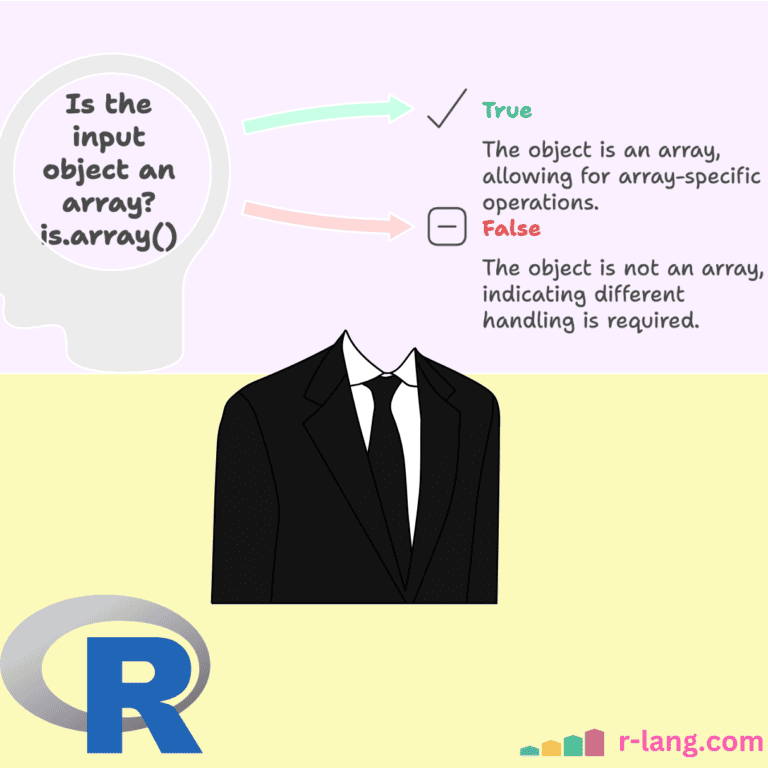The is.array() is a built-in R function that checks whether an input object is an array. It returns TRUE if it is an array and FALSE otherwise.
Syntax
is.array(obj)Parameters
| Name | Value |
| obj | It is an input object that will be checked for an array object. |
Visual representation
Checking for an array object
# Creating an array
arr <- array(1:9, dim = c(3, 3, 3))
# Checking if it is an array
is.array(arr) # Output: TRUESince an “arr” is an array, it returns TRUE.
Let’s check for a vector.
# Creating a vector
vec <- c(1, 2, 3, 4, 5)
# Checking if "vec" is an array
is.array(vec) # Output: FALSEAnd as expected, we got the FALSE output.
Checking matrix object
Matrix is a special case in R because it is an array with two dimensions. Therefore, is.array() will return TRUE for matrices as well.
# Create a matrix
mtrx <- matrix(1:9, nrow = 3)
# Checking if 'mtrx' is an array
is.array(mtrx) # Output: TRUE
# Checking the class of 'mtrx'
class(mtrx) # Output: "matrix" "array"You can say that all matrices are arrays, but not all arrays are matrices in R.
Checking with NA and NaN
If you create an array containing both NA and NaN values, the is.array() function correctly returns TRUE.
# Create an array with NA and NaN
arr_na_nan <- array(c(1, NA, 3, NaN, 5, 6), dim = c(2, 3))
# Check if it's an array
is.array(arr_na_nan) # Output: TRUEThat’s all!

Krunal Lathiya is a seasoned Computer Science expert with over eight years in the tech industry. He boasts deep knowledge in Data Science and Machine Learning. Versed in Python, JavaScript, PHP, R, and Golang. Skilled in frameworks like Angular and React and platforms such as Node.js. His expertise spans both front-end and back-end development. His proficiency in the Python language stands as a testament to his versatility and commitment to the craft.



